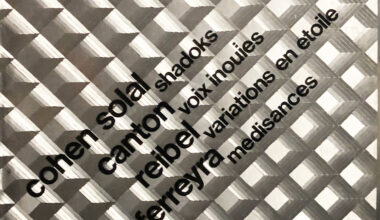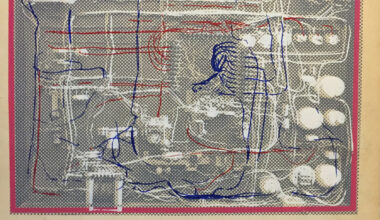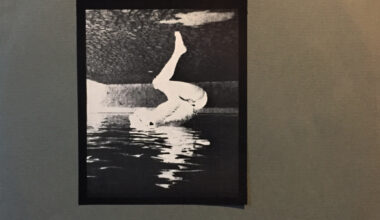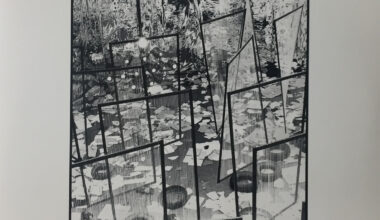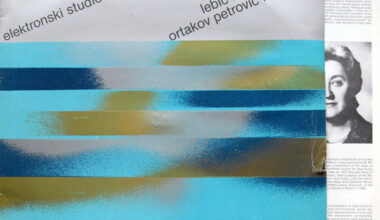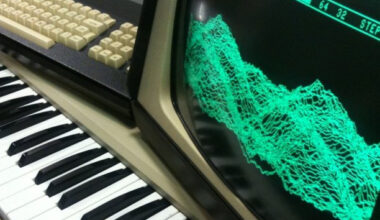The extraordinary tale of American composer Jerry Hunt, performance artist, avant-garde sound sculptor and maker of one very limited edition handmade vinyl album

I’ve been corresponding with Robin Rimbaud, aka Scanner, over the years, and recently he mentioned that he really liked the composer Jerry Hunt. It reminded me that I had one of his records, so I dug it out. It was released on Irida Records in 1979.
His life story is quite something. He was born in Texas in 1943, and never lived anywhere else. Apparently he didn’t even travel that much. When he was still at school he started making money selling mail-order instruction in “the path of the infinite” and seriously studied the Rosicrucian cult, which developed hundreds of years ago in Europe and claimed to give its followers special knowledge about some universal truth that would change the course of humanity when the time was right. While he was into the occult, he was a committed atheist.
He was also gay, which couldn’t have been easy in Texas in the late 1950s. His parents thought he was very odd, and sent him to see a psychiatrist who found him to be perfectly well adjusted.
He was certainly a complicated and interesting guy. As an adult he started making a living by playing piano in nightclubs and strip joints, and was friends with Jack Ruby, the nightclub owner who shot Lee Harvey Oswald.
In the 1970s, he was using all kinds of electronic devices to make music. He performed with what he called “interrelated electronic, mechanic and social sound-sight interactive transactional systems” in the late 1970s, using sensors from video cameras, infrared detectors and ultrasound generators, which would trigger sounds when he moved in front of them. Apparently, he would whip himself, with an actual whip, and work himself up into a real frenzy during his performances, playing his “device arrays”.
His first record, the one I mentioned to Scanner, was released in 1979, ‘Cantegral Segment(s) 16.17.18.19. / Transform (Stream) / Transphalba / Volta (Kernel)’ on his own label, Irida. It’s all very homemade, with silkscreened artwork glued to the record cover, the sleevenotes on the back are photocopied and cut out and then stuck down, too. There were 125 made, and Jerry signed each one.
There’s another edition without the handmade sleeves and no signature. When I dug out the my album, I realised that I had pretty much every release on the Irida label. The catalogue numbers are all over the place. The Jerry Hunt album has the catalogue number “Irida 0032”, but it’s the first release on the label, and they only ever released seven albums between 1979 and 1980.
The other records I have on the label also have handmade covers. James Fulkerson released ‘James Fulkerson’ (Irida 0017) in 1980. He’s an experimentalist, using a trombone with tape delays. The album was recorded at the University Of East Anglia and Dartington Collge Of Arts in December 1979. There’s an album by Larry Austin called ‘Hybrid Musics’ (Irida 0022), which was released in 1980. There are also couple of compilations and one by a guy called Dary John Mizelle. It’s all interesting and strange music.
Jerry Hunt carried on making music and performance projects all his life, but there weren’t any more vinyl releases after the first album, and his next release wasn’t until 1992, a CD called ‘Ground: Five Mechanic Convention Streams ‘ on OODiscs.
He died just before his 50th birthday. He’d been a manic smoker and he chewed tobacco. He had terminal cancer. He then made a video about how to end your own life with a canister of carbon monoxide, a tube and a face mask. In the video he explains how to use the equipment to kill yourself. The instructions are quite detailed. He committed suicide shortly after making the video, using the equipment and the method he had set out in the video.
If you can’t find one of the 125 signed, handmade vinyl editions of his first album, the CD ‘Song Drapes’ is quite easy to find on John Zorn’s Tdzak label, and one track features Mike Patton of Faith no More.
